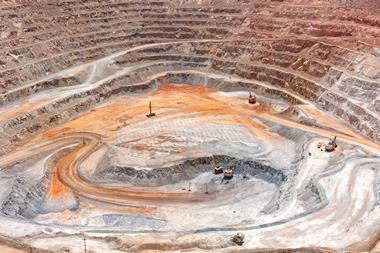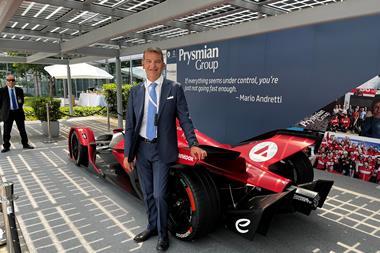Nor Adila Ismail, the long-serving chief risk officer at Malaysian oil and gas company PETRONAS, has taken an unconventional route to the top. She reveals what she has learned about the risk profession, and offers some advice to newcomers.
Adila Ismail, chief risk officer of Malaysian oil and gas giant PETRONAS, did not set out to become one of the leading risk managers in Asia. At the very start of her career, Ismail set her sights on being a computer scientist. But she quickly discovered that computers were not her calling: “I couldn’t get my programmes to run”, she says. “And I was spending so much time in the lab.”
In the end, computer science’s loss was the risk profession’s gain. Ismail is the top risk manager at PETRONAS, the Malaysian oil and gas company with revenues of more than $11.7 billion US Dollars, and operations across the globe. She has been with PETRONAS since 1991, rising up the ranks in a number of different roles. She now has responsibility for overseeing the huge number of global risks that face the company every year.
Ismail has charted an unusual path into risk management. After her spell as a computer scientist, she studied in America, completing an undergraduate degree in accounting at the University of Northern Illinois. A further accounting qualification at the University of Missouri graduate school followed.
Rather than starting as a risk manager at PETRONAS, Ismail started in a back-office role, before moving to the company’s fund management business. “It gave me a sense of how to monitor markets. I was up all night looking at positions and payroll issues.” She then became the head of the office, tasked with solving audit issues, using her accounting background.
In 2004, Ismail was asked to implement a risk management system for the company. “I started thinking about creating value with risk,” she says. “This led to the creation of a financial risk management framework, and how we would manage balance sheet risk.” She adds: “As the company has grown, it is not just about balance sheet risk, or credit or liquidity, it also about seeing foreign exposure risk, and foreign exchange risk.”
Ismail chairs PETRONAS’ risk management committee, which is tasked with monitoring risks at the oil and gas giant. She says PETRONAS’ risk function has developed over time to suit the needs of the business: “We have evolved from looking at internal risk to understanding how financial risk exposures affect the business. Risk managers tend to think about risk management through a risk management lens, but it is about how we interface with the business.”
Ismail says the company’s risk management approach has become less prescriptive and more focused on decision-making: “There is still focus on instilling practicality within the group, but given where the oil and gas market is today, with so much volatility and growth opportunities, there is a lot more emphasis on understanding multifaceted decisions that happen within the group.”
Ismail has seen risk management become an integral part of the operation. She says her financial risk background has made it easier to communicate other risks to senior figures: “When we started we just wanted a seat at the table, and we couldn’t have that seat. But it has finally come to a point where we have influence and are able to voice an opinion.”
She adds: “When I started risk management wasn’t very well understood. My challenge is to make sure there is a uniform understanding of risk. Having a financial risk management background helps. Quantifying risk brings meaning. Look at the oil price. It is now 85 [dollars] when it was [60] (To reflect current oil price). The pace of change is so fast and can’t be covered by looking at things on a quarterly basis. We need to be agile in the way we look at risk.”
Ismail admits it is difficult for risk managers to be heard within an organisation, and offers the following advice: “You have to
become more of a communicator. When you speak to executive leadership, they have a better understanding of technical issues. But at board level, you have to size up the main issues.” She says risk managers have to see things “through the lens of management”.
How does PETRONAS handle risk differently? Ismail says the company has changed the way it reports risk. Rather than using a 5x5 risk matrix, the firm focuses on issues including value chains, and how interdependent PETRONAS divisions are. We used to talk about return on invested capital, and now we combine that with how liquid we are, future cash flows, stress testing. We also look at the floor price of oil we would be okay to pursue growth with. It is a bit different to just making risk appetite statements.”
Ismail has learnt the importance of presentation when making her case to decision-makers: “When we quantify risks, we bring meaning to their exposure when decisions are being made. At some point, we need to ask, is this worth it, and are we getting bang for our buck? We need to find out whether decision- making authorities recognise risk, or pursue a commercial opportunity.”
With years of experience in the risk industry, Ismail wants to change the view of the profession. She says risk is more than an “operational” role. “That gives the impression risk can be mitigated, when in many cases, it cannot. In certain countries you need to understand the fiscal, political, currency regime, and how these affect investments. Sometimes you’re operating in countries that are vulnerable to regime change. We need to understand and elevate that. That’s the challenge, as commercial decisions always prevail. We need to think about how to protect our investments.”
With an unpredictable energy market and a host of geopolitical issues to contend with, what does Ismail believe will be the major risks of 2019? She predicts “oil price volatility” will continue to dominate. “Also, whether liquidity levels support our growth opportunities. Our portfolio is changing, and we have a big international portfolio. We need to be able to monetise it.”
Ismail has strong feelings about the future of the risk industry. She believes it needs to become more of a profession, with dedicated education programmes: “If you look at lawyers or doctors, they are seen as a profession. We don’t think of risk management as a profession. That is the function of things; there are not enough programmes out there that offer specialised education. We are seeing more programmes, but there is still nothing like the specialised programmes you see for architects, lawyers, or doctors.”
Ismail says an uncertain career path makes it difficult to pursue a career in risk. She adds: “In the accounting industry there is a career path to become a CFO. But to become a CRO, there isn’t a career path. One would say you really need to be in the business before you become a risk manager. You have to go through the mill in the business and then become a risk manager. I feel there is a lot of potential, but we are not there yet.”
With years of experience in the risk industry, what advice would Ismail offer new entrants to the industry? “If someone wants to pursue risk management, I’d advise them to get experience of the business first. You become a better risk manager that way. I’ve been given a lot of opportunities to be involved with this business. But the person that joins today may not have those opportunities. You need to build up your risk management knowledge.”




















No comments yet